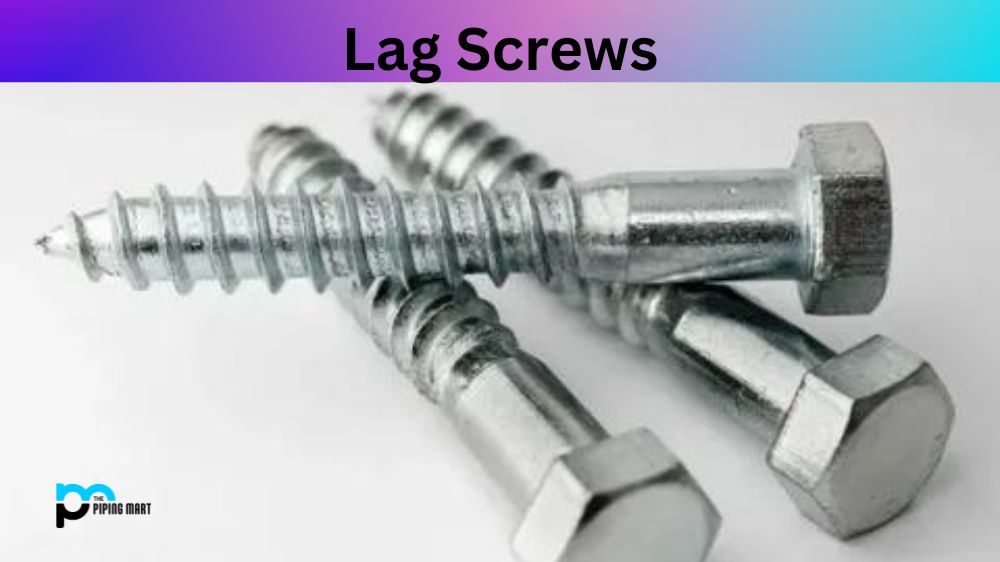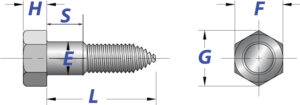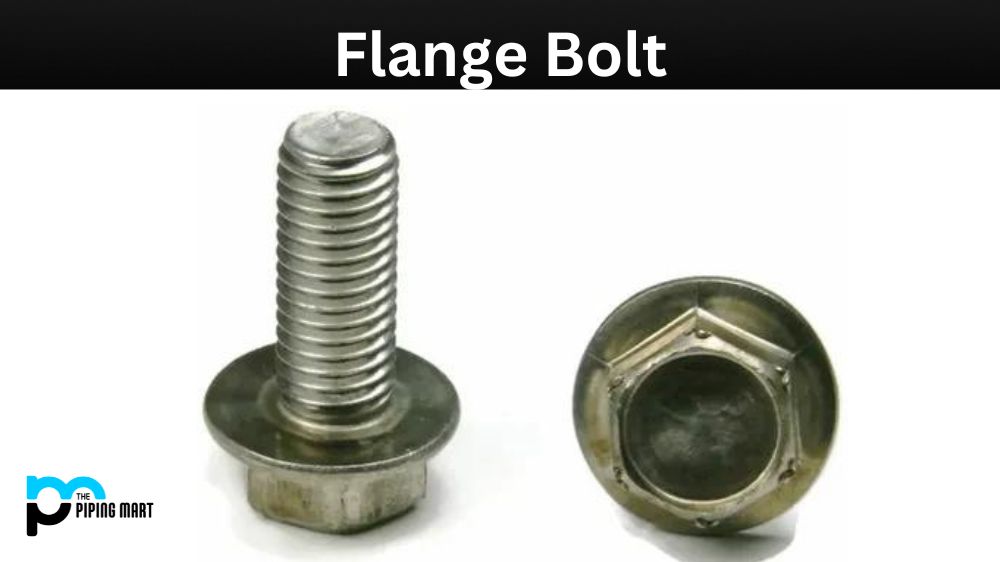Have you ever wondered what lag screws are and how they differ from regular screws? What makes them so versatile and ideal for various applications? Lag screws, also known as lag bolts, are large wood screws with a hexagonal or square head designed to secure wood, metal, concrete, and other materials. They come in various sizes and lengths, and their unique properties make them suitable for a wide range of DIY and construction projects. In this post, we will look closer at lag screws, their dimensions, properties, and uses, so you can make an informed decision when choosing the right fastener for your project.
What is Lag Screw?
A lag screw is a fastener with a thick, coarse thread and a hexagonal or square head. It’s typically used to secure heavy loads into wood and metal surfaces, alone or in combination with other screws. Lag screws are designed to hold better than standard wood screws because the wide threads create higher friction between the secured objects. The lag screw also requires more force to drive it in place but results in an incredibly strong bond once installed correctly.
Lag Screw Dimensions:
| Hex Lag Screws: Dimensions (ASME B18.2.1-1996) | |||||||||||||
|---|---|---|---|---|---|---|---|---|---|---|---|---|---|
| Basic Product Diameter
Click on the size to shop products |
Threads Per Inch | Body or Shoulder Diameter (E) | Width Across Flats (F) | Width Across Corners (G) | Head Height (H) | Shoulder Length (S) | |||||||
| Max | Min | Basic | Max | Min | Max | Min | Basic | Max | Min | Min | |||
| #10 | .1900 | 11 | .199 | .178 | 9/32 | .281 | .271 | .323 | .309 | 1/8 | .140 | .110 | .094 |
| 1/4 | .2500 | 10 | .260 | .237 | 7/16 | .438 | .425 | .505 | .484 | 11/64 | .188 | .150 | .094 |
| 5/16 | .3125 | 9 | .324 | .298 | 1/2 | .500 | .484 | .577 | .552 | 7/32 | .235 | .195 | .125 |
| 3/8 | .3750 | 7 | .388 | .360 | 9/16 | .562 | .544 | .650 | .620 | 1/4 | .268 | .226 | .125 |
| 7/16 | .4375 | 7 | .452 | .421 | 5/8 | .625 | .603 | .722 | .687 | 19/64 | .316 | .272 | .156 |
| 1/2 | .5000 | 6 | .515 | .482 | 3/4 | .750 | .725 | .866 | .826 | 11/32 | .364 | .302 | .156 |
| 5/8 | .6250 | 5 | .642 | .605 | 15/16 | .938 | .906 | 1.083 | 1.033 | 27/64 | .444 | .378 | .312 |
| 3/4 | .7500 | 4-1/2 | .768 | .729 | 1-1/8 | 1.125 | 1.088 | 1.299 | 1.240 | 1/2 | .524 | .455 | .375 |
| 7/8 | .8750 | 4 | .895 | .852 | 1-5/16 | 1.312 | 1.269 | 1.516 | 1.447 | 37/64 | .604 | .531 | .375 |
Lag Screw Properties:
Unlike regular screws, lag screws are made of hard steel, which makes them reliable and durable. Lag screws come with different coatings, including galvanized, black oxide, zinc plating, and stainless steel. Depending on the application, these coatings enhance the screws’ resistance to rust, corrosion, and weathering. Also, lag screws have a tapered shank below the thread, allowing them to dig into the material and create more resistance to pull-out and shear forces.
Lag Screw Uses:
Lag screws have many uses, including building decks, installing fences, securing structural components, and anchoring heavy machinery. Because of their weather-resistant properties, they are ideal for constructing outdoor structures, such as pergolas, carports, and gazebos. Lag screws are also used in home renovation projects, such as framing and carpentry, where they are used to mount large and heavy objects securely to walls and roofs.
Lag Screw Installation:
Installing lag screws is a straightforward process that requires a few tools, including a drill, a socket wrench, and a pilot hole drill bit. To install lag screws, first, drill a pilot hole that matches the screw’s diameter and shank dimension. Next, use a socket wrench to drive the screw into the material until it’s flush with the surface. It’s essential to ensure that the screw is tightened to the recommended torque to prevent overloading or underloading, which can damage the material or affect its structural integrity.
Lag Screw Maintenance:
To ensure the longevity of lag screws, it’s essential to carry out regular maintenance and inspections. Check the screws periodically to ensure they are not loose, corroded, or damaged. If you notice any signs of corrosion or rust, replace the screws with new ones to maintain the structure’s integrity.
Conclusion:
Thanks to their unique properties and versatility, lag screws are an essential component of construction and DIY projects. They are reliable and durable and come in various sizes and coatings to suit different applications. By understanding the dimensions, properties, and uses of lag screws, you can make an informed decision when choosing the right fastener for your project. When installing and maintaining lag screws, follow the recommended procedures to ensure they operate as intended and maintain the material’s structural integrity.





